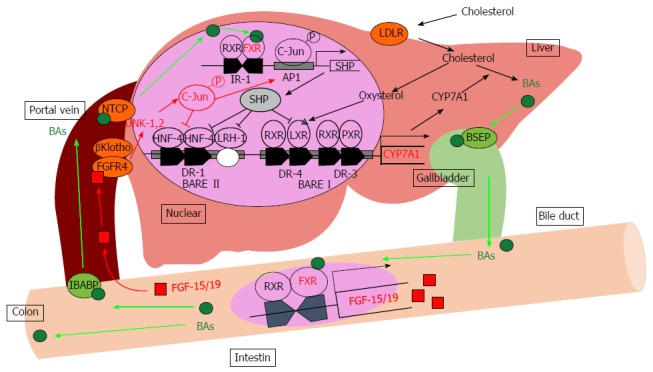Figure 1.

Bile acid metabolism in the liver. BAs induce the FXR-SHP-mediated pathway and repress BA synthesis enzyme gene expression such as CYP7A1 and CYP8B1. Synthesized BAs increase the expression of FGF-15/19 in the small intestine. FGF-15/19 signaling induces JNK pathway activation resulting in the repression of CYP7A1 transcription. AP1: Activator protein 1; BAs: Bile acids; BARE: Bile acid response element; BSEP: Bile salt export pump; CYP7A1: Cholesterol-7α-hydroxylase; DR: Direct repeat element; FGF-15/19: Fibroblast growth factor-15/19; FGFR4: Fibroblast growth factor receptor 4; FXR: Farnesoid X receptor; HNF-4: Hepatocyte nuclear factor; IBABP: Intestinal bile acid-binding protein; IR-1: Inverted repeat element-1; JNK: Jun-N-terminal kinase; LDLR: Low-density lipoprotein receptor; LRH-1: Liver receptor homolog-1; LXR: Liver X receptor; NTCP: Sodium-taurocholate cotransporting polypeptide; PXR: Pregnane X receptor; RXR: Retinoid X receptor; SHP: Small heterodimer partner.
